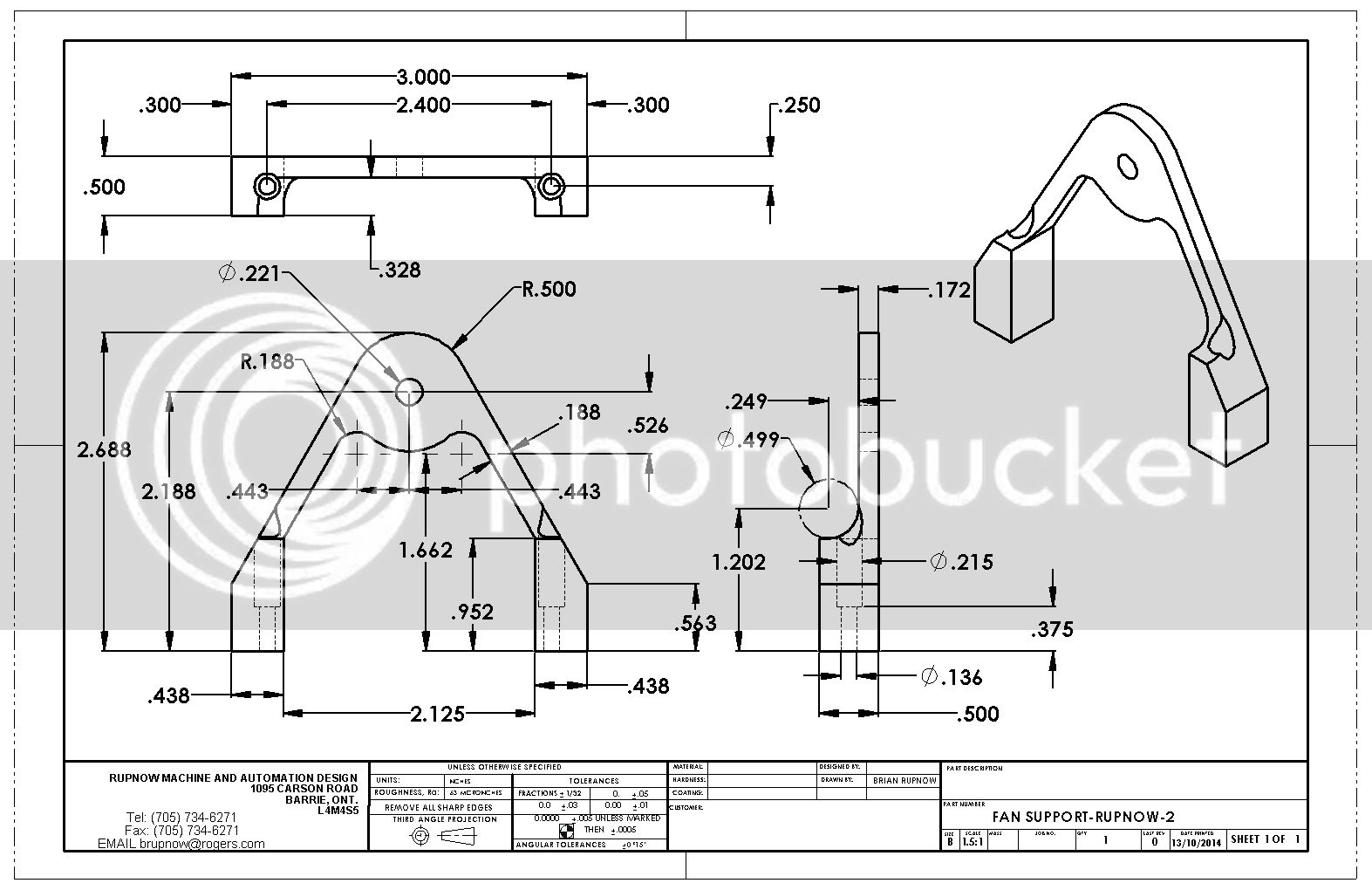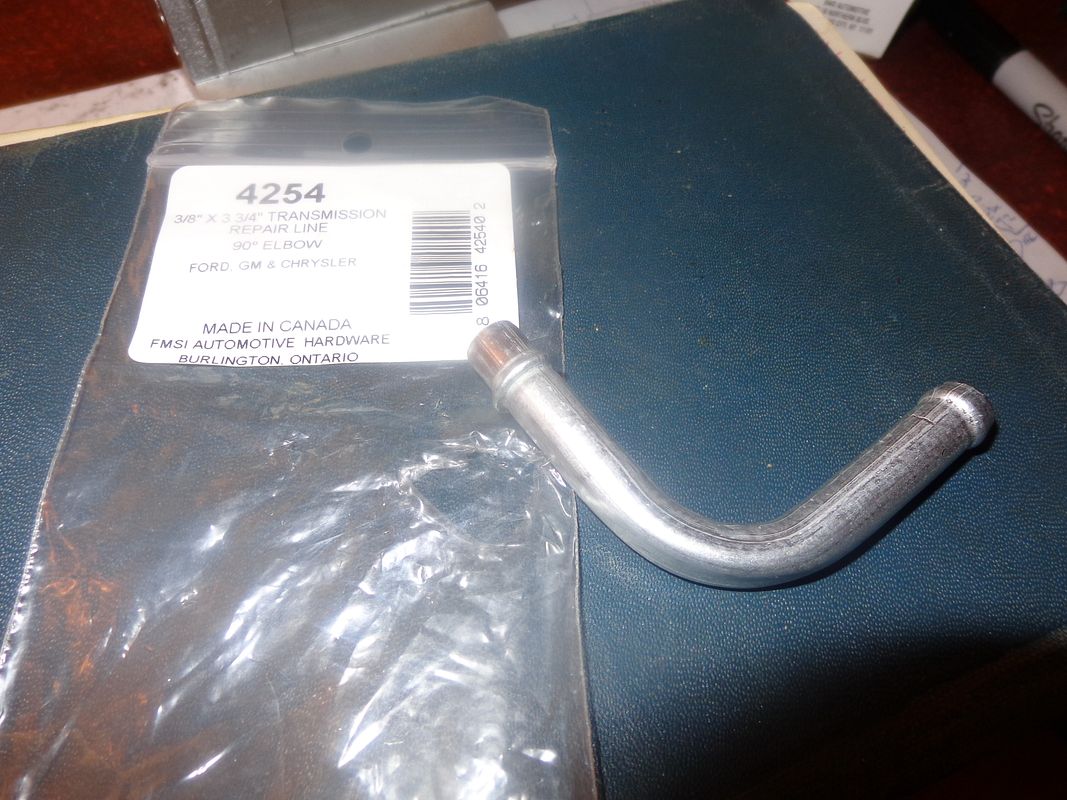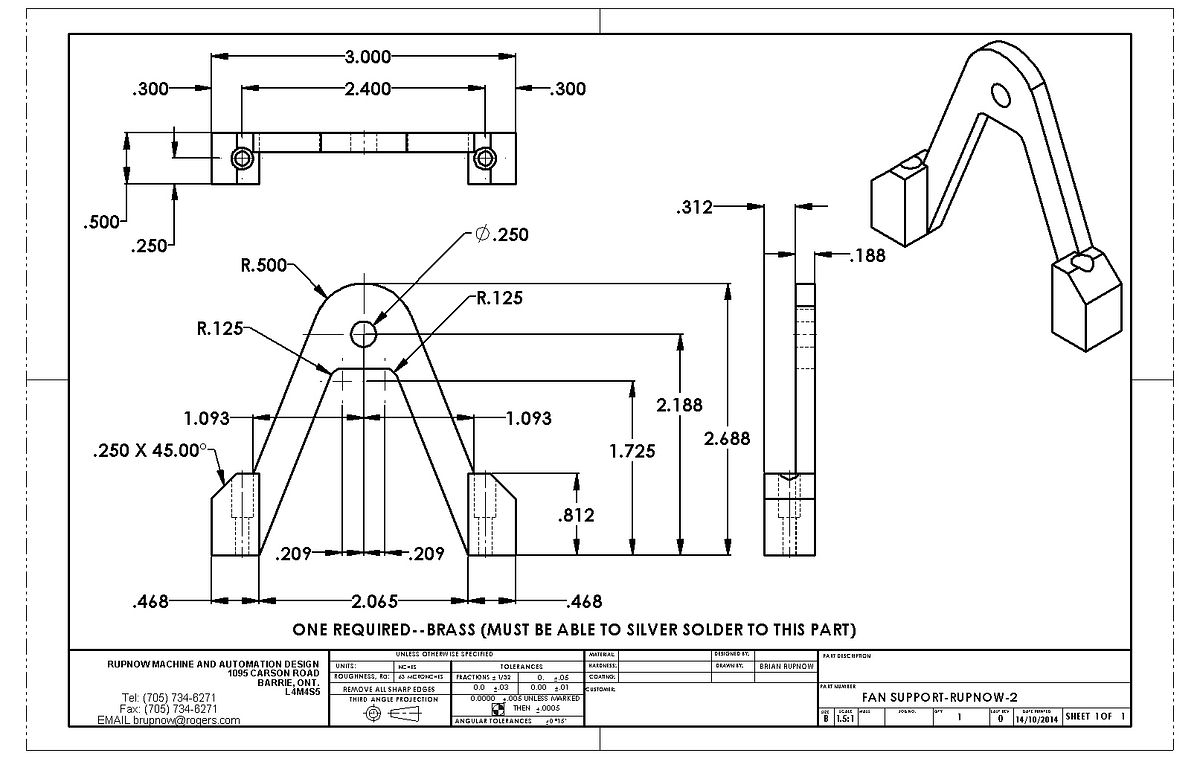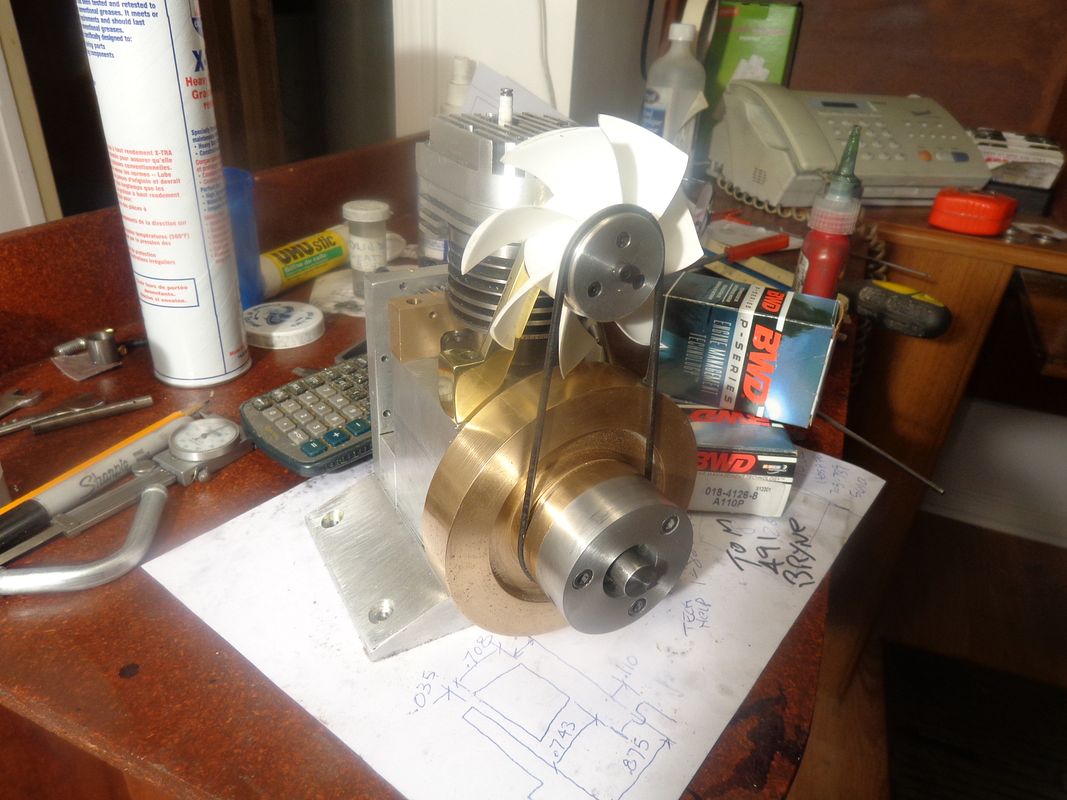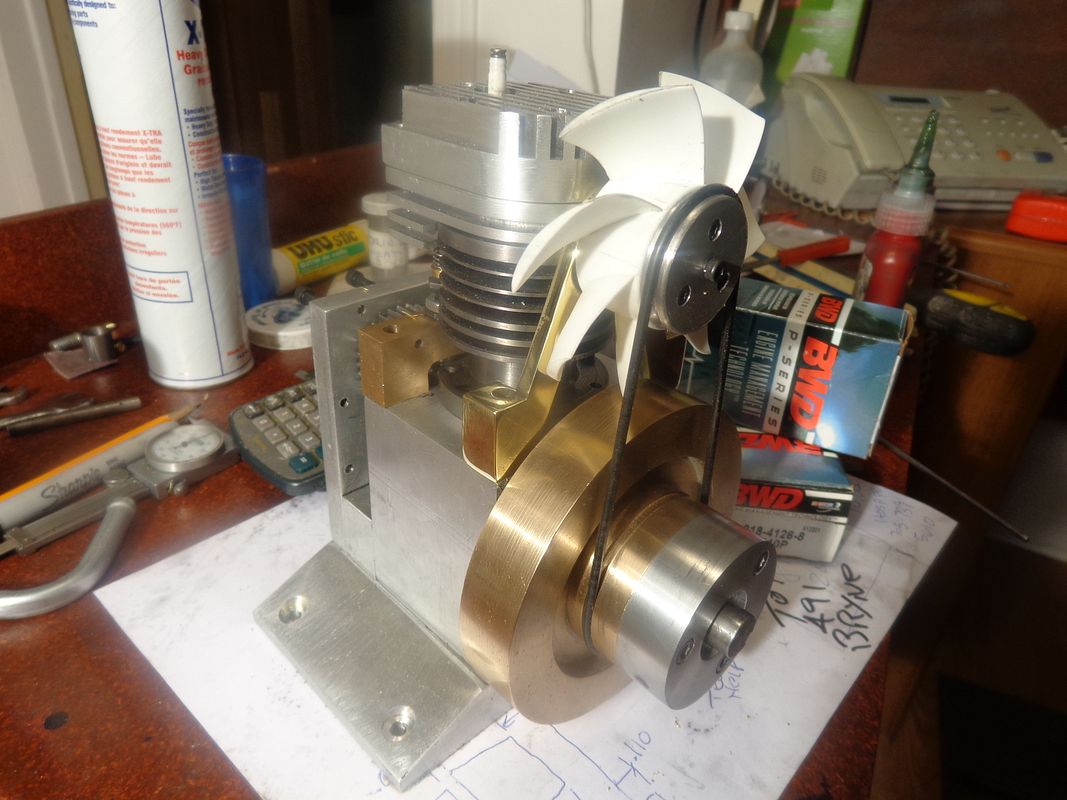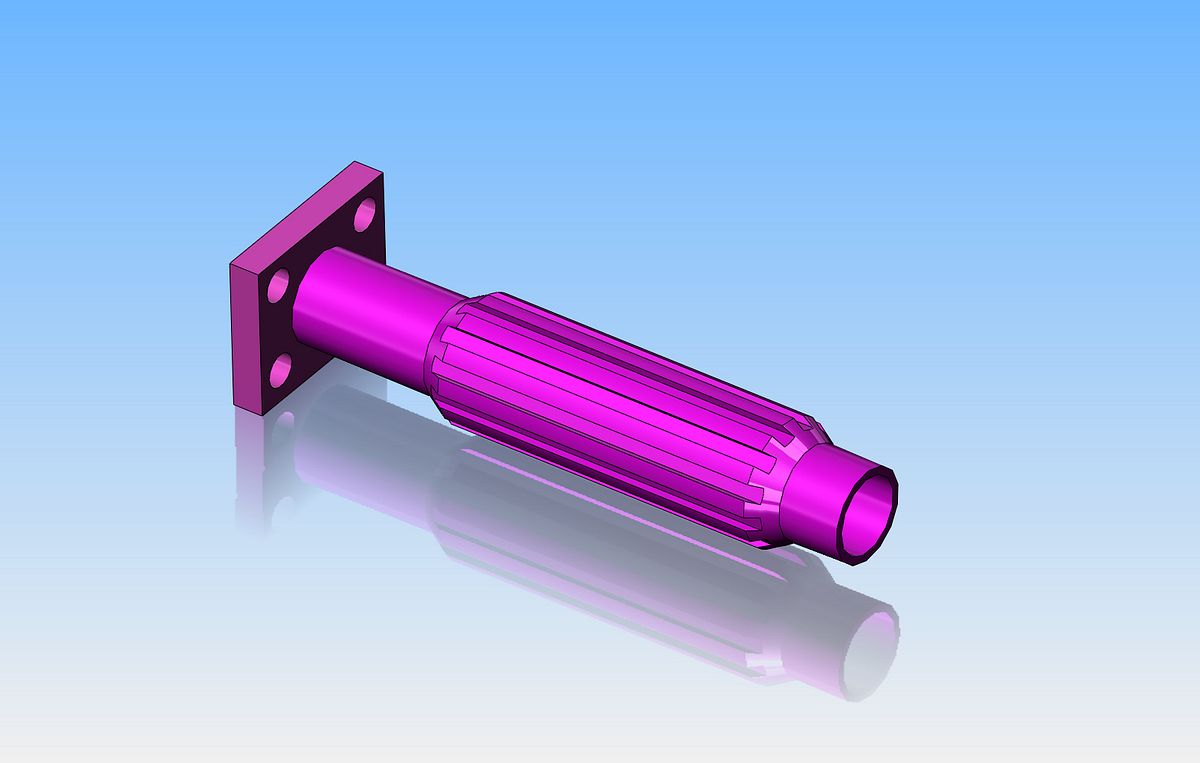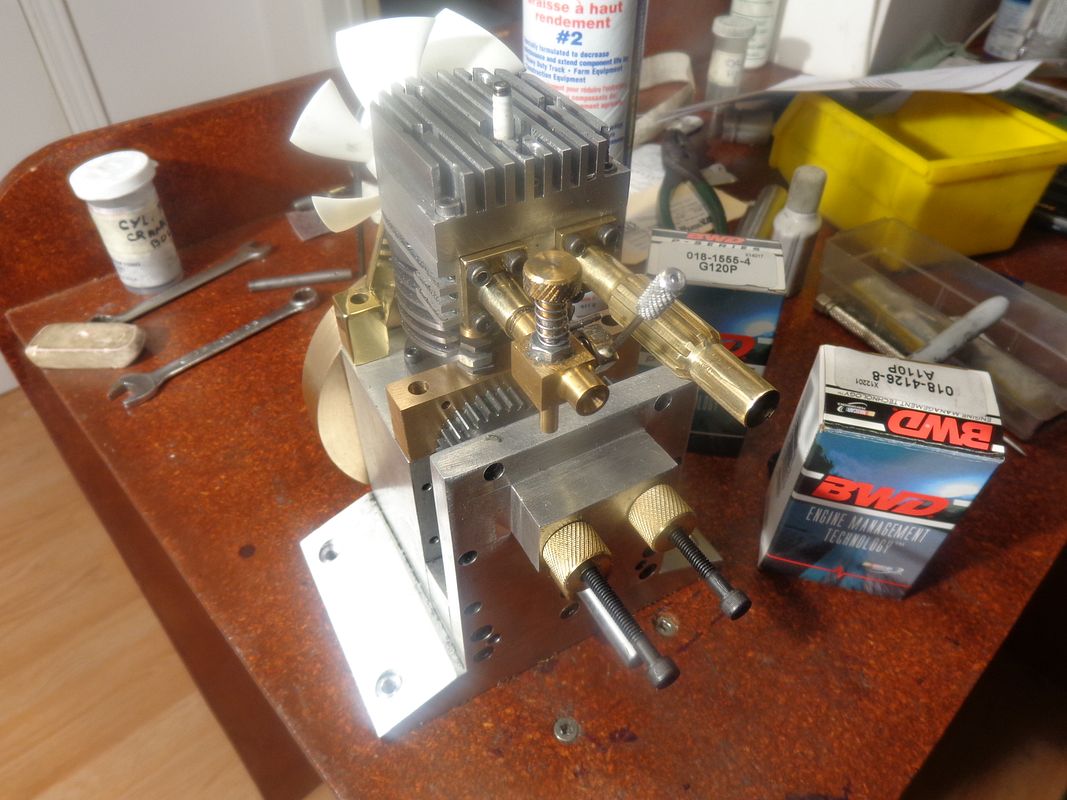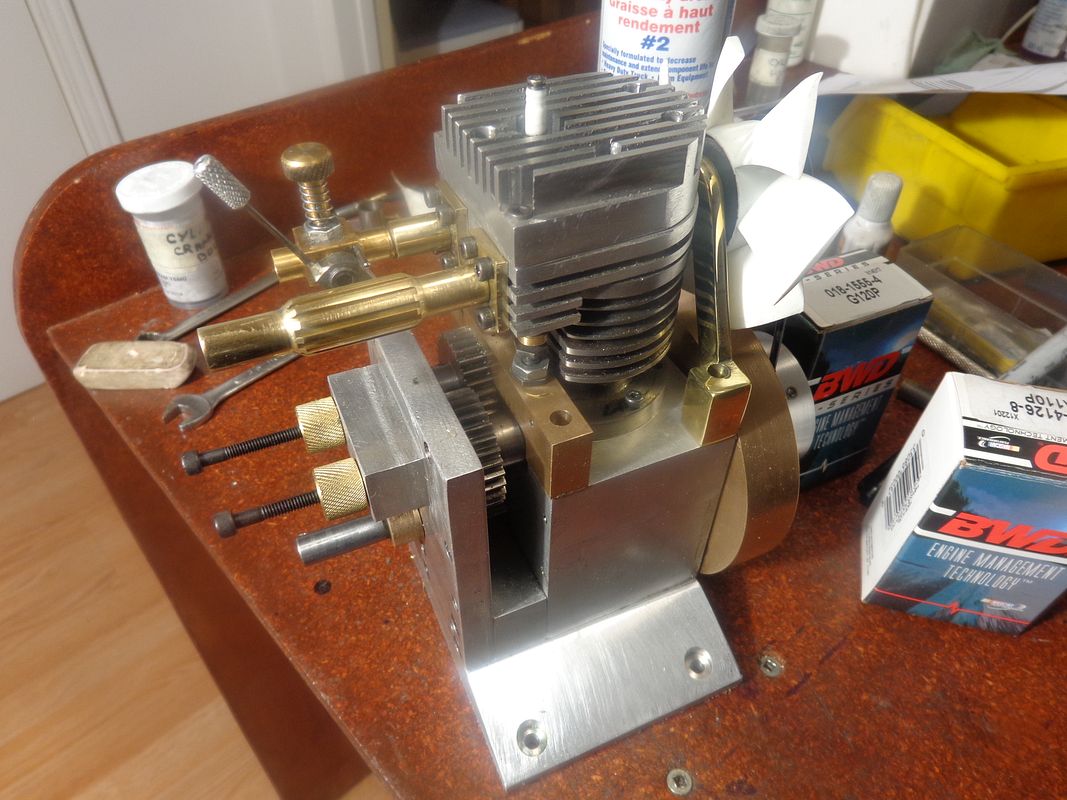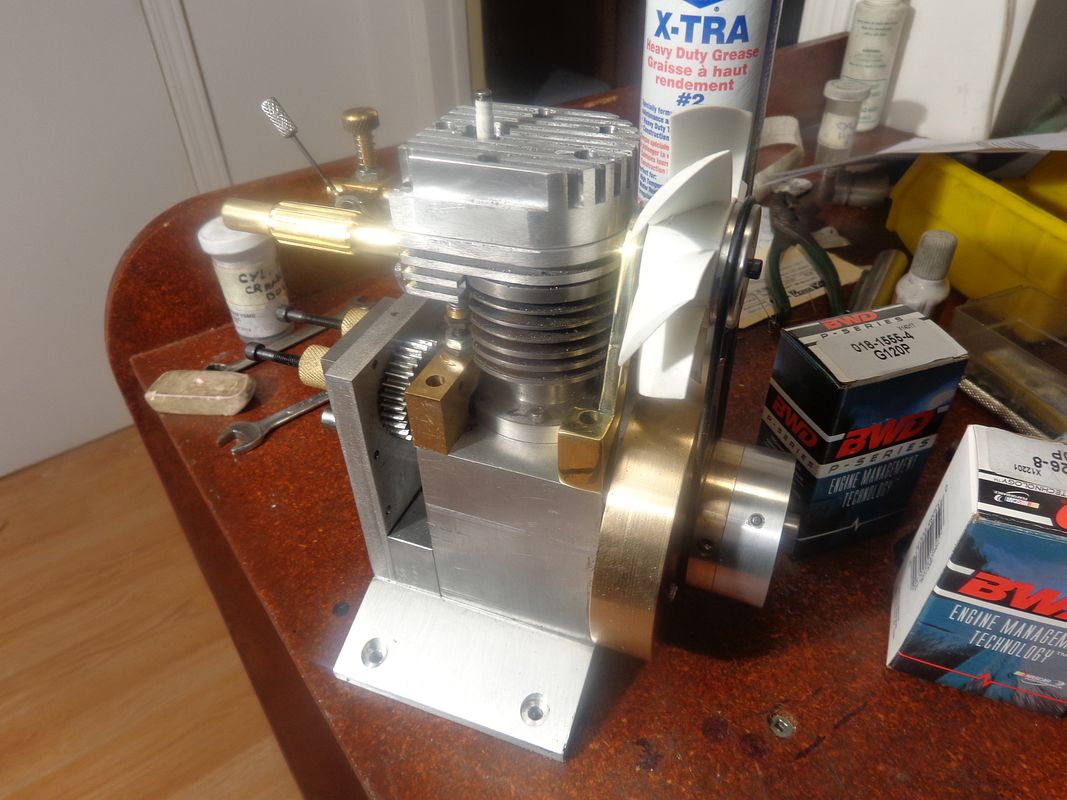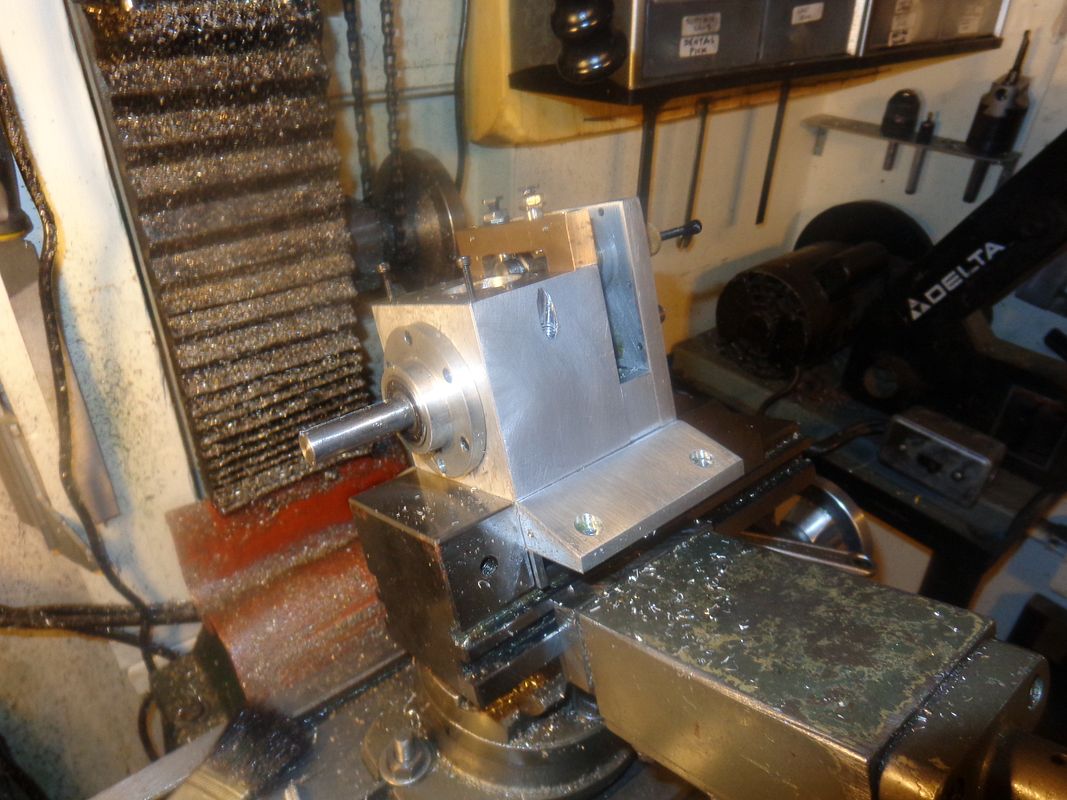I've heard it said that "Close only counts in horse-shoes and hand grenades." There is one other place that it counts, and that is clearance where the con rod exits a round hole in the bottom of the cylinder. I showed lots of clearance in my 3D cad model when I took a section view thru the center of the engine, but in the case of a rectangular cross section rod exiting thru a round hole in the bottom of the cylinder, it doesn't tell the whole story. If you look at the edge of the con rod, about at the center, you will see how much clearance I DIDN'T have. I thought I felt some resistance when I first rotated the assembled engine by hand, but it was stiff and I was able to get a full rotation after working the crankshaft back and forth a bit rotationaly. I will file a radius on the corners of the con rod, and that will take care of things. There is no moral to this story, other than the fact that building one of these small engines always has a few surprises in the process. Laying in the picture with the con rod and piston is the newly machined and hardened wrist pin.


Last edited:





